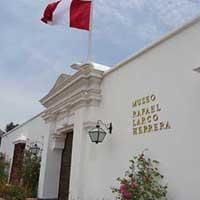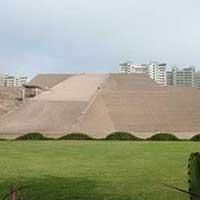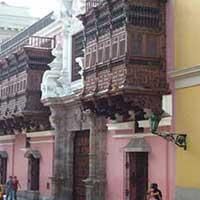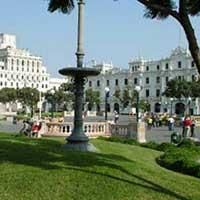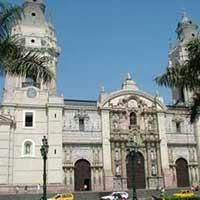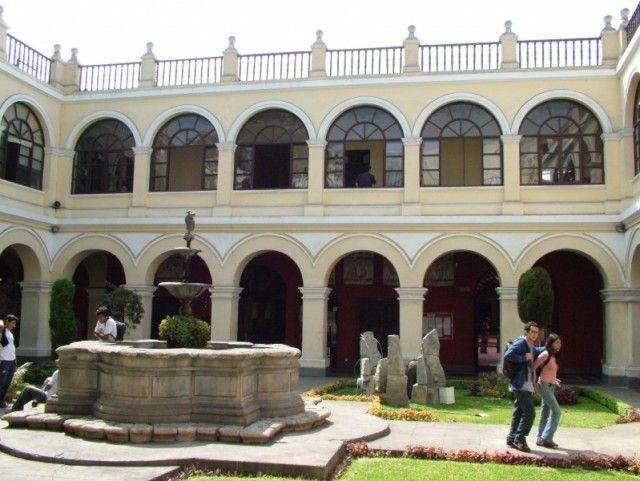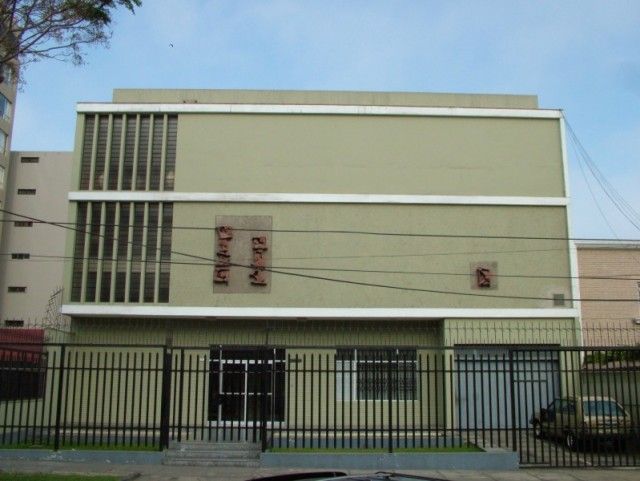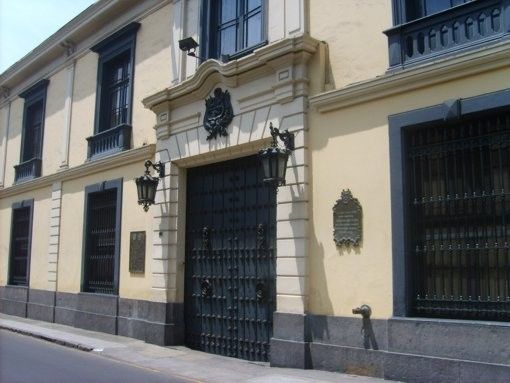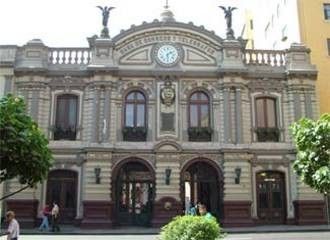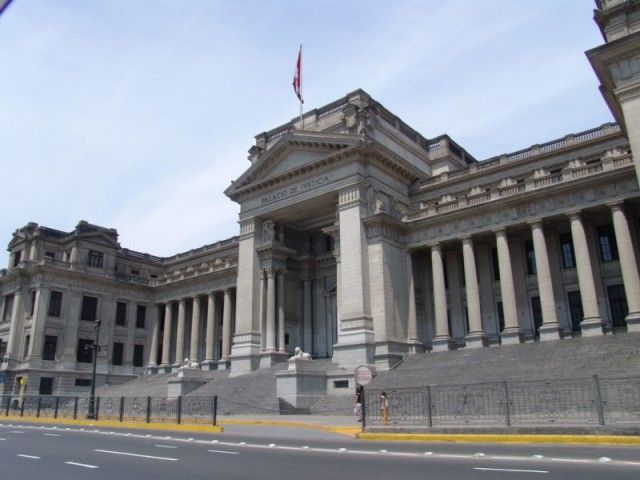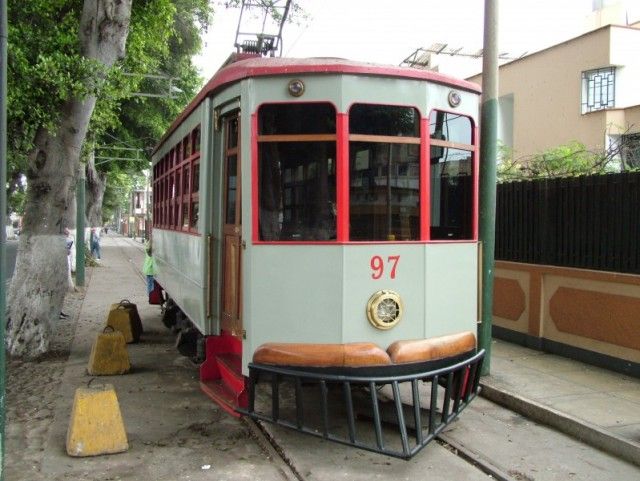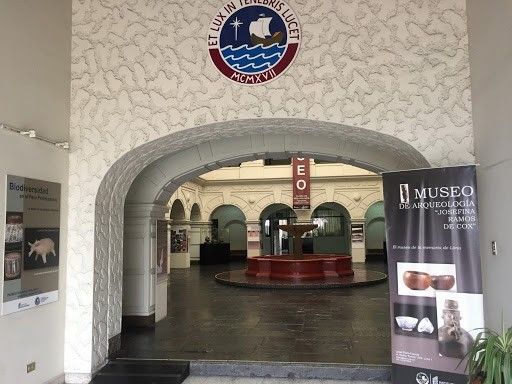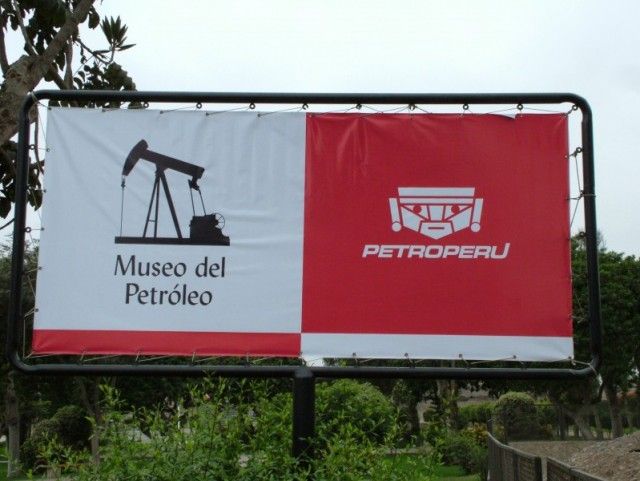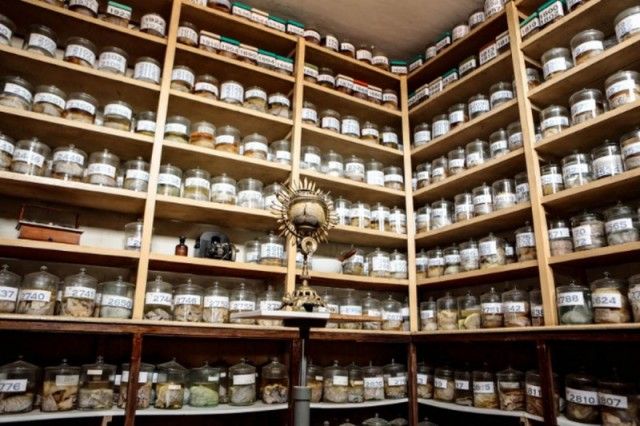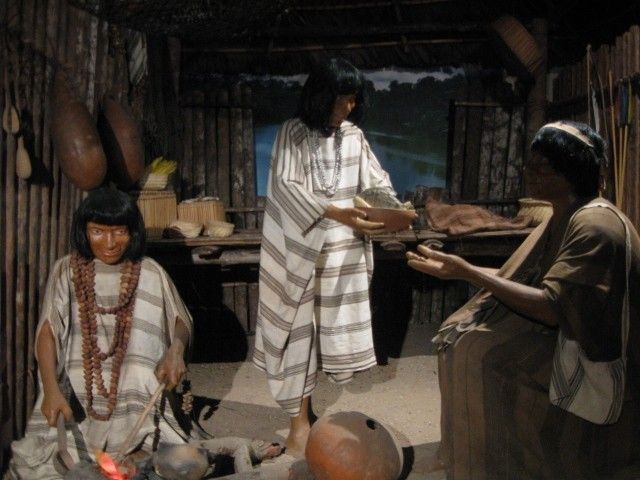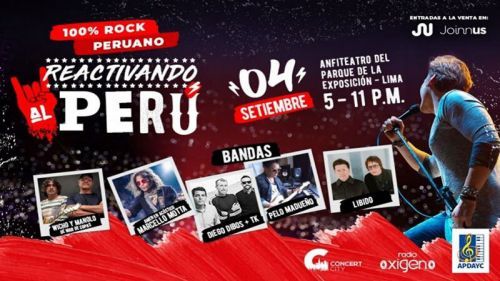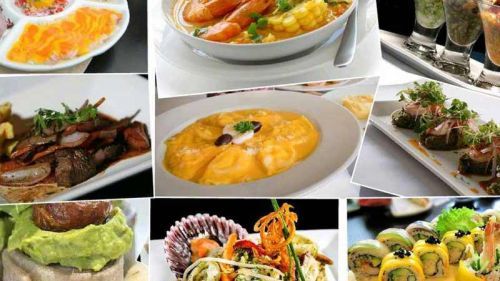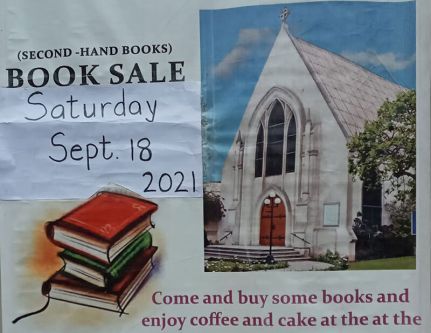- Peru Guide
- Peruvian Visa Types
- Public Holidays & Festivals
- Peru Info
- Culture & Entertainment
- Legal Stuff
- Customs Regulations & Info
- How many days did I get?
- Tourist Visa extension in Peru
- Peruvian Overstay Fine
- International Document for Antecedentes Peru
- Paying Administration Charges
- Permit to Sign Contracts
- Interpol - Ficha de Canje
- Travel Permit
- Subsanacion - Submitting documents
- Extending a Migraciones deadline
- Residence visa extension
- Renewal Carné de Extranjería
- Update Migraciones information
- Carné replacement
- Marrying in Peru
- Driver's License in Peru
- Police Clearance Certificate Peru
- Travel Authorization for Minors
- Finding a Job in Peru
- Domestic Workers in Peru
- Labor Regulations Peru
- Air Passenger Rights
- Safety, Security & Travel Advice
- Shopping in Peru
- Stay Connected
- Business Guide
- Earthquakes
- Emergencies & Help
- History of Peru
- Education, Teaching & Schooling
- Glossary of Terms
- Lima Guide
- Travel & Sights
- Food
- Money
- Events
- Opinion
- Media
- Peru Guide
- Peruvian Visa Types
- Public Holidays & Festivals
- Peru Info
- Culture & Entertainment
- Legal Stuff
- Customs Regulations & Info
- How many days did I get?
- Tourist Visa extension in Peru
- Peruvian Overstay Fine
- International Document for Antecedentes Peru
- Paying Administration Charges
- Permit to Sign Contracts
- Interpol - Ficha de Canje
- Travel Permit
- Subsanacion - Submitting documents
- Extending a Migraciones deadline
- Residence visa extension
- Renewal Carné de Extranjería
- Update Migraciones information
- Carné replacement
- Marrying in Peru
- Driver's License in Peru
- Police Clearance Certificate Peru
- Travel Authorization for Minors
- Finding a Job in Peru
- Domestic Workers in Peru
- Labor Regulations Peru
- Air Passenger Rights
- Safety, Security & Travel Advice
- Shopping in Peru
- Stay Connected
- Business Guide
- Earthquakes
- Emergencies & Help
- History of Peru
- Education, Teaching & Schooling
- Glossary of Terms
- Lima Guide
- Travel & Sights
- Food
- Starter & Appetizer
- Sandwiches
- Soups
- Main Courses
- Salsas, Sauces & Dips
- Desserts
- Snacks
- Drinks & Beverages
- Peruvian Cheese
- Fruits
- Vegetables
- Aji - Chili Peppers
- Grains, Coffee, Beans & Nuts
- Common Herbs
- Other Ingredients
- Money
- Peru Guide
- Peruvian Visa Types
- Public Holidays & Festivals
- Peru Info
- Culture & Entertainment
- Legal Stuff
- Customs Regulations & Info
- How many days did I get?
- Tourist Visa extension in Peru
- Peruvian Overstay Fine
- International Document for Antecedentes Peru
- Paying Administration Charges
- Permit to Sign Contracts
- Interpol - Ficha de Canje
- Travel Permit
- Subsanacion - Submitting documents
- Extending a Migraciones deadline
- Residence visa extension
- Renewal Carné de Extranjería
- Update Migraciones information
- Carné replacement
- Marrying in Peru
- Driver's License in Peru
- Police Clearance Certificate Peru
- Travel Authorization for Minors
- Finding a Job in Peru
- Domestic Workers in Peru
- Labor Regulations Peru
- Air Passenger Rights
- Safety, Security & Travel Advice
- Shopping in Peru
- Stay Connected
- Business Guide
- Earthquakes
- Emergencies & Help
- History of Peru
- Education, Teaching & Schooling
- Glossary of Terms
- Lima Guide
- Travel & Sights
- Food
- Starter & Appetizer
- Sandwiches
- Soups
- Main Courses
- Salsas, Sauces & Dips
- Desserts
- Snacks
- Drinks & Beverages
- Peruvian Cheese
- Fruits
- Vegetables
- Aji - Chili Peppers
- Grains, Coffee, Beans & Nuts
- Common Herbs
- Other Ingredients
- Money
- Lima Guide
- Culture Guide
Culture Guide
Lima is known for its rich historical and cultural past. Long before the Spaniards arrived several other cultures with highly advanced skills in construction, agriculture and arts settled the area of today's Lima. The Spanish colonist added to this legendary cultural legacy. Based on the model of Spanish cities, the "City of the Kings" arose and soon Lima became the political, economic, cultural and religious center of the Spanish colonies in South America. A completely different culture with European and Moorish influence mixed with the indigenous cultural and religious inheritance.
Everywhere visible in Lima is how these ancient cultures melted with modern factors. Amazing archaeological sites like the "Huacas" (Adobe pyramids) are spread over the city and are worth a visit. A must for every Lima visitor is the Historic City Center with amazing buildings, plazas and churches from Colonial times. Don't miss the numerous museums, displaying a huge variety of Lima's and Peru's culture from antique and traditional to modern and contemporary. Theatres, cinemas and Cultural Centers complete Lima's cultural scene.
National School of Fine Arts
Historical BuildingsThis beautiful preserved convent from 1603, used to be the "Centro de Estudios del Real Colegio Secular de los Agustinos de San Ildefonso" and the "Convent de las Monjas Recogidas" (the Convent of the "Quiet Nuns"). In September 1918 the "Escuela Nacional de Bellas Artes" (School of the Beaux-Arts) was founded and after five months of restoratio...The Amano Museum
Museums in LimaFounded by Yoshitaro Amano the Museum Amano most probably displays the best collection of textiles and ceramics of the Chancay culture. Additionally a large number of mainly ceramics belonging to the Kotosh, Moche, Chimu, Cunispique and Nazca culture are exhibited.House of the Money
Historical BuildingsIn April 1561 Diego Lopez de Zuñiga asked the Spanish Crown for the authorization to establish a "currency house" in Lima to bring order to the various currencies issued in the country. The permission for unified silver coins was granted by Felipe II in August 1565. The production began almost immediately in the Government Palace and other place...Postal and Philatelic Museum
Museums in LimaThe museum was housed in the Central Post Office in Lima and showed a lot of diverse material somehow related to the Peruvian postal history. Unfortunately the Postal and Philatec Museum was closed in 2010 and until now it's unkown if it will be reopend again in another location.Justice Palace
Historical BuildingsThe Justice Palace is a building characteristic for Lima’s modernization and remodeling process at the beginning of the 20th century. Inspired by the Justice Palace in Brussels, though much smaller and lacking the dome, works for the neo classical structure started in 1929 and were finished in 1938. Strategically located at the "entrance" to Lim...The Electricity Museum
Museums in LimaThe nice and small museum is dedicated entirely to the history and development of electricity in Peru. The main subjects are: Pioneers, power generation, energy sources, the impact of electricity on daily life, energy saving and finally the history of electrical trains in Lima. You will find a historical archive about electricity companies and a...Archaeological Museum Josefina Cox
Museums in LimaLocated in the traditional Casa O'Higgins in the historical center of Lima the Archaeological Museum Josefina Ramos Cox preserves the pre-Hispanic history. The main collection includes objects recovered from the Archaeological Complex of Maranga including amazing ceramics, mate vessels, textiles and many other interesting archaeological findings.The Oil Museum
Museums in LimaThe Museo de Petroleo (Oil Museum) is located in the Parque de las Leyendas. The small museum offers an educational exhibition about the process of exploration, exploitation and the transforming of oil and its derivatives.Neuropathology Museum - The Brain Museum
Museums in LimaThe Institute of Neurological Science (INCN) in Lima houses the only "Brain Museum" in Latin America. The magnificent and amazing collection contains over 3000 samples from which around 300 are on permanent display, including brains with diverse cerebral injuries or abnormalities and fetuses, a unique assortment of pathological microphotographs ...Ethnographic Museum Cultural Center José Pio Aza
Museums in LimaThe museum provides a space where you can see and learn more about the "human and cultural side" of the Amazonian region in Peru. Displayed are more than 1000 objects including textiles of all kinds, masks, musical instruments, ceramics, vessels, armaments and much more. The main aim of the museum is to bring close the Amazon region by showing t...Peru Newsflash
New lizard species discovered in Peru
There is still so much new to find out about and see in Peru. Just recently Peruvian scientists discovered a…Peru has the second-worst drivers in the world
For those living and driving in Peru it comes to no surprise. A recent study by Compare the Market, an…Machu Picchu reopens for the first time after the social outbreak
The Ministry of Culture of Peru decided to re-open Machu Picchu after it was closed on January 21 because of…Peru extends the state of emergency in 44 districts
The Peruvian government extended the “state of emergency” in 44 districts of the central departments of…
Peru Event Calendar
Upcoming Events in Peru
Latest Content...
- International Schools in Peru
International Christian School of Lima - ICS Lima
- Peruvian Visa Types
Peruvian Digital Nomad Visa
- Laws, Norms, Legal Codes & Decrees
Legislative Decree No. 1582 (Modification of the Peruvian Foreigner Law, Nov 2023)
- Peruvian Cheese
Queso Rojo de Lluta
- Peruvian Cheese
Peruvian Queso Andino
- Peruvian Cheese
Peruvian Quesillo
- Peruvian Cheese
Peruvian Queso Mantecoso
- Peruvian Cheese
Peruvian Queso Paria
- Peruvian Cheese
Peruvian Queso Fresco
- Legal Stuff
Extension of a Migraciones deadline
- Legal Stuff
Subsanacion - Submitting documents
- Legal Stuff
Amnesty for Migraciones fines
- Legal Stuff
Replacement for a lost, stolen or damaged carné
- Legal Stuff
Renewal of the Carné de Extranjería
Latest Video
Long Reads...
- Peruvian Archaeology
The Mystery of the Nazca Lines in Peru
In the 1920s, when people first flew across southern Peru, they made an astonishing discovery. Stretching below them,… - Peruvian Personalities & Founders
Francisco Pizarro González (1474-1541)
Francisco Pizarro, a peasant from Spain, was one of the least well-equipped conquerors in history. However, in the name… - Peruvian Archaeology
The colorful Fabrics and Textiles of Peru
Europe’s first knowledge of Peruvian textiles was acquired following the Spanish invasion of Peru in 1532, when the… - Peruvian Legends, Myths & Tales
The Jeweled Frog and the Condor
By a quiet pond, at the side of a cloud-topped mountain in Peru, lived a small green frog and his large green family.… - Peru Info
Peruvian Economy
The Peruvian economy is an emerging, social market economy highly dependent on foreign trade and classified as an upper…
Contact us | Editorial Ethics | Support | T&C | Copyright | Privacy | Discussions & Submissions | Cookies Policy | GDPR | CCPA | DMCA


